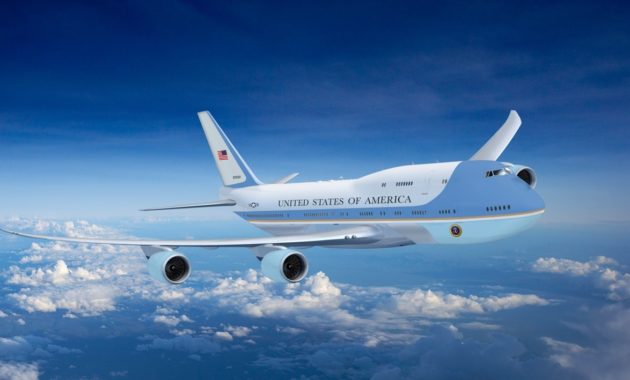
President Donald Trump was stretching the truth when he claimed that he trimmed a billion dollars from the cost of procuring the next two Air Force One planes, but a report on Defense One reveals that significant savings are indeed being made – primarily by cutting back on features that are on the existing Air Force One planes.
According to today’s report, there’s at least one capability on the current Boeing 747-200B jets that the Boeing 747-8 planes acquired last month won’t be able to match: aerial refueling.
Air Force sources told Defense One that the current aircraft, which entered presidential service in 1990, have never used that capability. And thanks to an expanded range of nearly 9,000 statute miles, as opposed to the current range of 7,750 miles, the new planes should be able to manage without an in-flight fill-up.
Going without the aerial refueling was just one of the cost-cutting measures that came out of Boeing CEO Dennis Muilenburg’s December meeting with Trump and the follow-up talks between Boeing and the Pentagon, Defense One reported.
Muilenburg reportedly presented four options, with total estimated outlays ranging from $4.4 billion to $2.28 billion, but Pentagon officials are going instead with a feature-by-feature approach to cut back costs while keeping the capabilities needed for a “flying White House.”
One way to cut costs was to start with surplus jets: The Pentagon agreed to buy two 747-8s that were essentially put in mothballs after the Russian airline that ordered them went bankrupt.
The initial purchase price for the planes has not been disclosed, out of concern that commercial customers would use the figures against Boeing in future sales negotiations. But in any case, the purchase price accounts for just a small percentage of the total multibillion-dollar cost.
Most of the money will go toward modifications to provide such add-ons as secure communications, in-flight defense systems and beefed-up power systems. Some of those modifications – for example, the requirements for autonomous power generation – will reportedly be scaled down as a cost-cutting measure.
The cost also depends on how plush the plane’s interior will be: Defense One says the new planes will have mostly commercial-grade interior furnishings instead of a custom configuration. (Which implies there’ll be none of the gold-plated fixtures that were installed on the 757 that Trump used during the campaign.)
So how much will the cost-cutting save, and what’s the total price tag? Air Force spokeswoman Ann Stefanek told Defense One that it’s too early to say. Engineers are still working on the layout and design of the planes, and it’s expected to take until next year to add up the cost.
Customization of the planes is due to begin in 2019. The heavily modified 747s are expected to begin presidential service in 2024.



